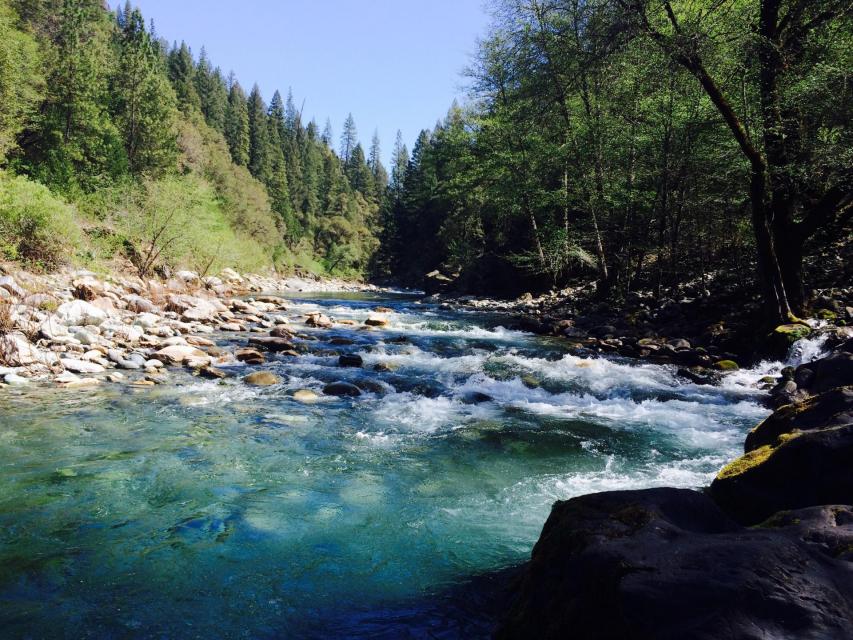California Wild and Scenic Rivers Act
 California’s Legislature passed the
Wild and Scenic Rivers Act in 1972, following the passage of the
federal Wild and Scenic Rivers Act by Congress in 1968. Under
California law, “[c]ertain rivers which possess extraordinary
scenic, recreational, fishery, or wildlife values shall be
preserved in their free-flowing state, together with their
immediate environments, for the benefit and enjoyment of the
people of the state.”
California’s Legislature passed the
Wild and Scenic Rivers Act in 1972, following the passage of the
federal Wild and Scenic Rivers Act by Congress in 1968. Under
California law, “[c]ertain rivers which possess extraordinary
scenic, recreational, fishery, or wildlife values shall be
preserved in their free-flowing state, together with their
immediate environments, for the benefit and enjoyment of the
people of the state.”
Rivers are classified as:
- Wild; free-flowing waterways that are unpolluted and generally inaccessible
- Scenic; free-flowing undeveloped waterways accessible by roads
- Recreational; readily accessible waterways with some development
According to the National Wild & Scenic Rivers System, California has about 189,454 miles of river, of which 1,999.6 miles of rivers or segments of rivers are designated as wild and scenic — about 1 percent of the state’s river miles.
Initially, the Wild and Scenic Rivers Act protected free-flowing rivers along California’s Northern Coast from development. This also preserved about a quarter of the state’s undeveloped water in its natural state. State-designated wild and scenic rivers were placed under the federal Wild and Scenic Rivers Act protection as well in 1980.
Today, California’s act prohibits construction of dams or diversion facilities, except to serve local needs, on portions of, or on entire rivers around the state. State rivers receiving state and federal protection under the Wild and Scenic Rivers acts include the Albion, Amargosa, American, Eel, Gualala, Klamath, Merced, Trinity and Tuolumne.








